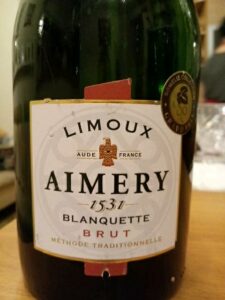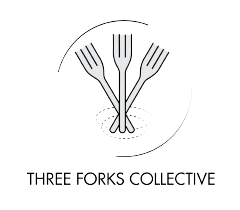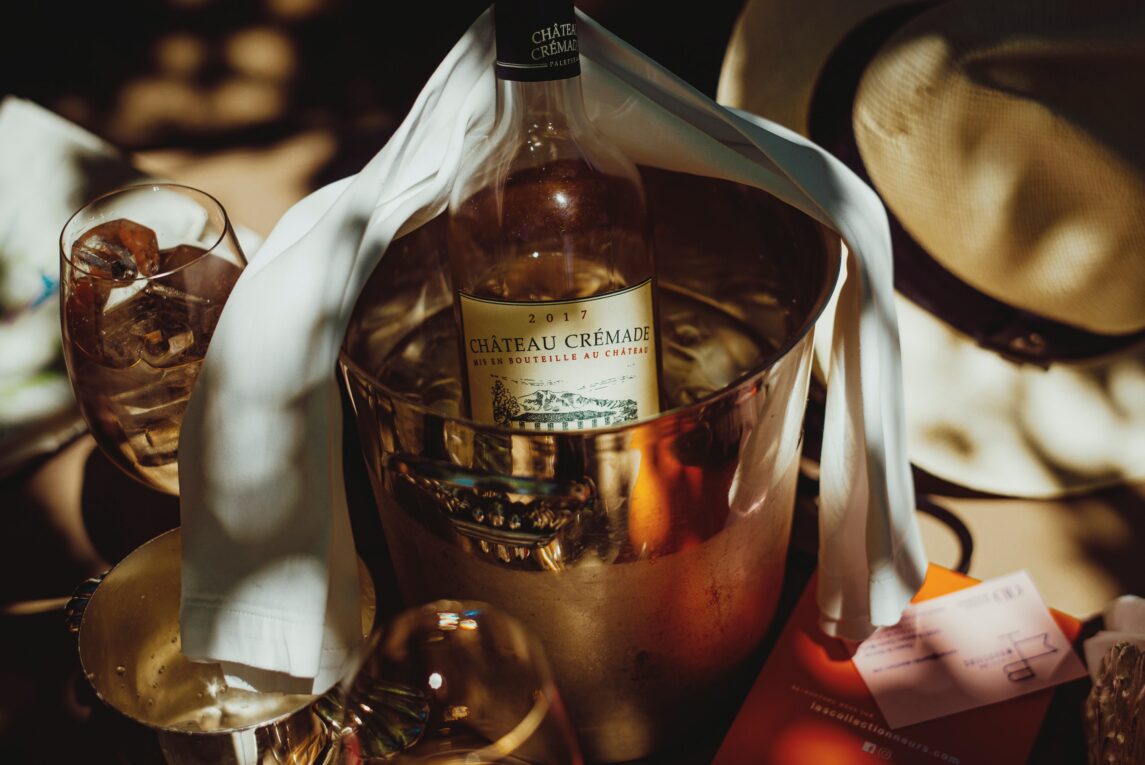Fizzing Through France: A Sparkling Journey of Terroir and Grape Varieties
Champagne is perhaps the most famous and iconic of all sparkling wines, but it is just one of many different types of bubbly produced in France. From the crisp and refreshing Crémants of the Loire Valley to the fruity and floral Blanquette de Limoux of the Languedoc-Roussillon region, French sparkling wines offer a wide range of styles, flavors, and aromas.

Champagne is made exclusively from three grape varieties: Chardonnay, Pinot Noir, and Pinot Meunier. These grapes are grown in the Champagne region, which is located in northeastern France and encompasses the towns of Reims, Épernay, and Aÿ, among others. Champagne production is highly regulated, with strict rules governing everything from the type of grapes that can be used to the amount of time the wine must spend on its lees (dead yeast cells) before disgorgement.
One of the most interesting facts about Champagne is that it was actually an accidental discovery. In the early 17th century, the wines of Champagne were known for their fizziness, which was considered a flaw. It wasn’t until the 18th century that Champagne producers learned how to control the bubbles and turn them into a desirable characteristic of the wine.

The Champagne region is divided into five sub-regions: Montagne de Reims, Vallée de la Marne, Côte des Blancs, Côte de Sézanne, and Côte des Bar. Each sub-region has its own unique terroir and produces wines with distinct characteristics. For example, the Montagne de Reims is known for producing Pinot Noir-dominant Champagnes with rich, full-bodied flavors, while the Côte des Blancs is known for its crisp and refreshing Chardonnay-dominant wines.
Outside of Champagne, one of the most well-known sparkling wines in France is Crémant. Crémant is produced using the traditional method, which is the same method used to make Champagne. However, Crémant can be made in different regions of France using different grape varieties, which gives it a unique flavor profile. For example, Crémant d’Alsace is made from a blend of Pinot Blanc, Pinot Gris, and Riesling grapes, while Crémant de Bourgogne is made from a blend of Chardonnay and Pinot Noir.
Another popular sparkling wine in France is Blanquette de Limoux, which is produced in the Languedoc-Roussillon region of southern France. Blanquette de Limoux is made using the Mauzac grape, which is known for its fruity and floral aromas. The wine is named after the town of Limoux, which is believed to be the birthplace of sparkling wine, with records dating back to 1531 documenting the production of “Blanquette” (meaning “little white”) wine with bubbles.

Moving on to the Loire Valley, which is known for producing a range of different sparkling wines, including Crémant de Loire, Saumur Mousseux, and Touraine mousseux. These wines are made using a variety of grape varieties, including Chenin Blanc, Cabernet Franc, and Pinot Noir, among others. One interesting fact about the Loire Valley is that the region is home to the largest underground wine cellar in the world, the Caves Ackerman, which stretches for over 11 kilometers and houses over 6 million bottles of wine.
Finally, we come to the Jura region, which is located in eastern France near the Swiss border. The Jura is known for producing a unique style of sparkling wine called “Vin Jaune,” which is made using the Savagnin grape and aged for at least six years in oak barrels. Vin Jaune has a distinctive flavor profile, with notes of nuts, spices, and a hint of oxidation, and is often described as an acquired taste. It is also worth noting that the Jura is one of the few wine regions in France that produces a significant amount of sparkling wine using the traditional method.
In conclusion, France is home to a diverse and fascinating array of sparkling wines, each with its own unique history, terroir, and grape varieties. While Champagne may be the most famous and prestigious of these wines, it is just one of many that are worth exploring. From the crisp and refreshing Crémants of the Loire Valley to the fruity and floral Blanquette de Limoux of the Languedoc-Roussillon region, French sparkling wines offer something for every palate and occasion. So next time you’re in the mood for some bubbly, why not try something new and discover the many delights of French sparkling wine?



vurcazkircazpatliycaz.Q4QclzFfhIA1
daktilogibigibi.wLJeLGYtzKz2
daxktilogibigibi.lv2LR41VKp5B
I am truly thankful to the owner of this web site who has shared this fantastic piece of writing at at this place.
yandanxvurulmus.Av4FaeDa1rG9
rototilled xyandanxvurulmus.tdhnmdRoprWd
Thank you for the auspicious writeup It in fact was a amusement account it Look advanced to more added agreeable from you By the way how could we communicate
https://antiddos24.ru/
Somebody essentially lend a hand to make significantly articles Id state That is the very first time I frequented your website page and up to now I surprised with the research you made to make this actual submit amazing Wonderful task
Wow superb blog layout How long have you been blogging for you make blogging look easy The overall look of your site is magnificent as well as the content
Fantastic beat I would like to apprentice while you amend your web site how could i subscribe for a blog site The account helped me a acceptable deal I had been a little bit acquainted of this your broadcast offered bright clear concept
Monitor phone from anywhere and see what’s happening on target phone. You will be able to monitor and store call logs, messages, social activities , images , videos, whatsapp and more. Real-time monitoring of phones, No technical knowledge is required, no root is required.
[url=https://rybelsus.best/]ozempic tablets for weight loss[/url]
[url=http://rybelsus.trade/]buy rybelsus online from india[/url]
[url=https://ozempic.cfd/]buy semaglutide online canada[/url]
Awesome! Its genuinely remarkable post, I have got much clear idea regarding from this post
Wow superb blog layout How long have you been blogging for you make blogging look easy The overall look of your site is magnificent as well as the content
Hi Neat post Theres an issue together with your web site in internet explorer may test this IE still is the marketplace chief and a good component of people will pass over your fantastic writing due to this problem
Simply wish to say your article is as amazing The clearness in your post is just nice and i could assume youre an expert on this subject Well with your permission let me to grab your feed to keep updated with forthcoming post Thanks a million and please carry on the gratifying work
I have been surfing online more than 3 hours today yet I never found any interesting article like yours It is pretty worth enough for me In my opinion if all web owners and bloggers made good content as you did the web will be much more useful than ever before
Wow, wonderful blog structure! How lengthy have you ever been running a blog for? you make blogging glance easy. The whole glance of your site is wonderful, as well as the content material!
Hey there You have done a fantastic job I will certainly digg it and personally recommend to my friends Im confident theyll be benefited from this site
Somebody essentially lend a hand to make significantly posts I might state That is the very first time I frequented your web page and up to now I surprised with the research you made to create this particular put up amazing Excellent job
I have been browsing online more than three hours today yet I never found any interesting article like yours It is pretty worth enough for me In my view if all website owners and bloggers made good content as you did the internet will be a lot more useful than ever before
Its like you read my mind You appear to know so much about this like you wrote the book in it or something I think that you can do with a few pics to drive the message home a little bit but instead of that this is excellent blog A fantastic read Ill certainly be back
What i do not realize is in fact how you are no longer actually much more wellfavored than you might be right now Youre very intelligent You recognize thus considerably in relation to this topic made me in my view believe it from numerous numerous angles Its like men and women are not fascinated until it is one thing to do with Lady gaga Your own stuffs excellent All the time handle it up.
Vitazen Keto Gummies I appreciate you sharing this blog post. Thanks Again. Cool.
Hi my family member I want to say that this post is awesome nice written and come with approximately all significant infos I would like to peer extra posts like this
It?¦s actually a great and helpful piece of information. I am satisfied that you just shared this useful info with us. Please keep us up to date like this. Thank you for sharing.
I like the helpful info you provide in your articles. I will bookmark your weblog and check again here frequently. I am quite sure I’ll learn lots of new stuff right here! Good luck for the next!
Excellent site. Lots of helpful info here. I¦m sending it to a few buddies ans additionally sharing in delicious. And obviously, thank you on your effort!
Business dicker I truly appreciate your technique of writing a blog. I added it to my bookmark site list and will
It’s exhausting to seek out knowledgeable individuals on this matter, however you sound like you recognize what you’re talking about! Thanks
Very good visual appeal on this web site, I’d rate it 10 10.
excellent points altogether, you simply gained a emblem new reader. What might you suggest in regards to your post that you simply made some days ago? Any certain?
Great wordpress blog here.. It’s hard to find quality writing like yours these days. I really appreciate people like you! take care
There is noticeably a bunch to know about this. I believe you made certain good points in features also.
I like what you guys are up too. Such clever work and reporting! Carry on the excellent works guys I’ve incorporated you guys to my blogroll. I think it’ll improve the value of my web site 🙂
hello!,I like your writing very much! share we communicate more about your post on AOL? I need a specialist on this area to solve my problem. Maybe that’s you! Looking forward to see you.
Some genuinely interesting details you have written.Helped me a lot, just what I was looking for : D.
so much fantastic information on here, : D.
Hi! Someone in my Facebook group shared this website with us so I came to look it over. I’m definitely enjoying the information. I’m bookmarking and will be tweeting this to my followers! Great blog and amazing design.
I think this is among the most significant info for me. And i am glad reading your article. But want to remark on some general things, The web site style is ideal, the articles is really nice : D. Good job, cheers
hello!,I really like your writing so much! percentage we keep up a correspondence extra about your article on AOL? I need a specialist in this house to solve my problem. May be that is you! Taking a look forward to see you.
This is the suitable blog for anyone who desires to find out about this topic. You realize so much its almost onerous to argue with you (not that I actually would want…HaHa). You undoubtedly put a new spin on a subject thats been written about for years. Great stuff, simply nice!
I have recently started a site, the information you offer on this website has helped me tremendously. Thanks for all of your time & work.
I know this if off topic but I’m looking into starting my own weblog and was curious what all is needed to get setup? I’m assuming having a blog like yours would cost a pretty penny? I’m not very internet smart so I’m not 100 sure. Any recommendations or advice would be greatly appreciated. Many thanks
Great post, I believe people should learn a lot from this web site its rattling user pleasant.
I do trust all the ideas youve presented in your post They are really convincing and will definitely work Nonetheless the posts are too short for newbies May just you please lengthen them a bit from next time Thank you for the post
Wonderful work! This is the type of information that should be shared around the internet. Shame on Google for not positioning this post higher! Come on over and visit my web site . Thanks =)
As a Newbie, I am always exploring online for articles that can aid me. Thank you
Thank you for the auspicious writeup It in fact was a amusement account it Look advanced to far added agreeable from you However how can we communicate
A formidable share, I simply given this onto a colleague who was doing just a little analysis on this. And he actually bought me breakfast because I found it for him.. smile. So let me reword that: Thnx for the treat! But yeah Thnkx for spending the time to discuss this, I really feel strongly about it and love studying more on this topic. If possible, as you change into experience, would you mind updating your weblog with more particulars? It’s highly useful for me. Massive thumb up for this blog submit!
Зарегистрируйтесь прямо сейчас и получите 100 фриспинов без депозита, чтобы испытать свою удачу в увлекательных играх и повысить свои шансы на крупный выигрыш. рейтинг казино онлайн suljfwvagn …
أنابيب الحديد الدكتايل في العراق بصفتها واحدة من المصادر الأكثر موثوقية لأنابيب الحديد الدكتايل في العراق، يكرس مصنع إيليت بايب جهوده لتوفير منتجات عالية الجودة. تُصمم أنابيب الحديد الدكتايل لدينا لتوفير قوة ومرونة فائقة، مما يجعلها مناسبة للتطبيقات الصعبة مثل توزيع المياه وأنظمة الصرف الصحي. بفضل تقنيات التصنيع المتقدمة والمراقبة الدقيقة للجودة، يضمن مصنع إيليت بايب أن يلبي كل أنبوب أعلى معايير الأداء والمتانة. ثق بمصنع إيليت بايب لاحتياجاتك من أنابيب الحديد الدكتايل وزيارة موقعنا الإلكتروني على ElitePipe Iraq.
Can I simply say what a reduction to search out somebody who actually knows what theyre talking about on the internet. You undoubtedly know how you can carry an issue to light and make it important. More people need to read this and understand this facet of the story. I cant imagine youre not more popular since you undoubtedly have the gift.
I got good info from your blog
Henof Very well presented. Every quote was awesome and thanks for sharing the content. Keep sharing and keep motivating others.
Thank you for the sensible critique. Me & my neighbor were just preparing to do some research on this. We got a grab a book from our area library but I think I learned more clear from this post. I’m very glad to see such excellent information being shared freely out there.
Pretty nice post. I simply stumbled upon your blog and wanted to mention that I have really enjoyed browsing your blog posts. In any case I’ll be subscribing on your feed and I hope you write once more soon!
I do trust all the ideas youve presented in your post They are really convincing and will definitely work Nonetheless the posts are too short for newbies May just you please lengthen them a bit from next time Thank you for the post
Its superb as your other articles : D, appreciate it for putting up.
You got a very fantastic website, Gladiola I found it through yahoo.
Sky Scarlet I truly appreciate your technique of writing a blog. I added it to my bookmark site list and will
Sky Scarlet Awesome! Its genuinely remarkable post, I have got much clear idea regarding from this post . Sky Scarlet
dodb buzz I really like reading through a post that can make men and women think. Also, thank you for allowing me to comment!
Insanont Awesome! Its genuinely remarkable post, I have got much clear idea regarding from this post . Insanont
Touch to Unlock I really like reading through a post that can make men and women think. Also, thank you for allowing me to comment!
Have you ever considered publishing an e-book or guest authoring on other websites? I have a blog based upon on the same topics you discuss and would really like to have you share some stories/information. I know my subscribers would value your work. If you’re even remotely interested, feel free to send me an e-mail.
I haven?¦t checked in here for some time because I thought it was getting boring, but the last few posts are great quality so I guess I?¦ll add you back to my everyday bloglist. You deserve it my friend 🙂
I think this is one of the most significant info for me. And i am glad reading your article. But want to remark on some general things, The site style is great, the articles is really nice : D. Good job, cheers
The take on hard to understand topics is like a smooth ride in a luxury car—comfortable, yet exhilarating.
The dedication to high quality content shows. It’s like you actually care or something.
Blue Techker Pretty! This has been a really wonderful post. Many thanks for providing these details.
The insights dazzled me more than a candlelit dinner. Thanks for lighting up my intellect.
Both informative and thought-provoking, as if my brain needed the extra workout.
Thinker Pedia Pretty! This has been a really wonderful post. Many thanks for providing these details.
The fresh insights were a breath of fresh air. Thank you for sharing The unique perspective.
Aroma Sensei This is really interesting, You’re a very skilled blogger. I’ve joined your feed and look forward to seeking more of your magnificent post. Also, I’ve shared your site in my social networks!
Hello there, just became alert to your blog through Google, and found that it’s really informative. I am going to watch out for brussels. I will be grateful if you continue this in future. Numerous people will be benefited from your writing. Cheers!
F*ckin’ remarkable issues here. I’m very satisfied to see your article. Thanks so much and i am having a look ahead to contact you. Will you kindly drop me a e-mail?
Most comprehensive article on this topic. I guess internet rabbit holes do pay off.
The attention to detail is as attractive as it is thorough. I appreciate a person who notices the little things.
The elegance of The prose is like a fine dance, each word stepping gracefully to the next.
Wonderful blog layout! Your site loads incredibly quickly. I’d love to know your hosting provider—could you share an affiliate link if possible? I’d like my site to load this smoothly too!
Its like you read my mind You appear to know so much about this like you wrote the book in it or something I think that you can do with a few pics to drive the message home a little bit but other than that this is fantastic blog A great read Ill certainly be back
Blue Techker Good post! We will be linking to this particularly great post on our site. Keep up the great writing
We are a bunch of volunteers and starting a new scheme in our community. Your web site provided us with useful information to work on. You’ve performed an impressive task and our entire community can be thankful to you.
Good – I should certainly pronounce, impressed with your web site. I had no trouble navigating through all tabs as well as related information ended up being truly simple to do to access. I recently found what I hoped for before you know it in the least. Reasonably unusual. Is likely to appreciate it for those who add forums or anything, web site theme . a tones way for your client to communicate. Nice task.
It’s hard to find knowledgeable people on this topic, but you sound like you know what you’re talking about! Thanks
Thanks for another informative web site. Where else could I get that kind of info written in such an ideal way? I have a project that I’m just now working on, and I’ve been on the look out for such information.
Packachange naturally like your web site however you need to take a look at the spelling on several of your posts. A number of them are rife with spelling problems and I find it very bothersome to tell the truth on the other hand I will surely come again again.
I just could not depart your web site before suggesting that I actually enjoyed the standard information a person provide to your guests? Is gonna be back ceaselessly in order to inspect new posts
I have been exploring for a little for any high-quality articles or weblog posts on this kind of area . Exploring in Yahoo I at last stumbled upon this web site. Studying this info So i am satisfied to express that I have an incredibly just right uncanny feeling I came upon just what I needed. I most unquestionably will make certain to do not put out of your mind this site and provides it a look on a continuing basis.
I am glad to be a visitor of this gross site! , thankyou for this rare info ! .
Reading The work is like watching the sunrise, a daily reminder of beauty and new beginnings.
The finesse with which you articulated The points has me captivated. It’s as if you’re speaking my language.
Bài viết rất hữu ích, thông tin rõ ràng và chi tiết. Cảm ơn bạn đã chia sẻ nội dung này!
Glue Dream strain I like the efforts you have put in this, regards for all the great content.
The attention to detail is as attractive as it is thorough. I appreciate a person who notices the little things.
Remember, the key with flirtatious comments is to keep them light-hearted, respectful, and ensure they’re taken in the spirit of fun and admiration.
Best experience with IPTV Italia estero, the streaming is excellent.
Its like you read my thoughts! You seem to understand a lot approximately this, like you wrote the book in it or something. I think that you simply can do with some percent to power the message home a little bit, however other than that, that is fantastic blog. A fantastic read. I’ll definitely be back.
The unique viewpoints in The writing never fail to impress me. Insightful as always!
Serving Iraq with pride, BWER supplies high-performance weighbridges designed to improve transport logistics, reduce inaccuracies, and optimize industrial processes across all sectors.
This was a great read—thought-provoking and informative. Thank you!
The post resonated with me on many levels. Thank you for writing it!
I always learn something new from The posts, like discovering new facets of a gem. Thanks for the gems!
The writing style is like a signature scent—distinct, memorable, and always pleasant.
The way you break down ideas is like a chef explaining a recipe, making hard to understand dishes seem simple.
With IPTV Italia TV, I enjoy the best Italian channels without interruption.
The work is truly inspirational. I appreciate the depth you bring to The topics.
Elegant and insightful, you tackle hard to understand issues like you’re dancing through words. Shall we dance some more?
Opened my eyes to new perspectives, and here I was thinking I’d seen it all.
Excellent goods from you, man. I’ve understand your stuff previous to and you’re just too wonderful. I actually like what you’ve acquired here, certainly like what you’re stating and the way in which you say it. You make it entertaining and you still take care of to keep it smart. I can not wait to read far more from you. This is really a terrific site.
Noodlemagazine I do not even understand how I ended up here, but I assumed this publish used to be great
I was suggested this web site by my cousin Im not sure whether this post is written by him as no one else know such detailed about my trouble You are incredible Thanks
What a refreshing take on this subject. I completely agree with The points!
Noodlemagazine Nice post. I learn something totally new and challenging on websites
Noodlemagazine very informative articles or reviews at this time.
Noodlemagazine I do not even understand how I ended up here, but I assumed this publish used to be great
Noodlemagazine I very delighted to find this internet site on bing, just what I was searching for as well saved to fav
Noodlemagazine very informative articles or reviews at this time.
Noodlemagazine very informative articles or reviews at this time.
Ücretsiz porno indir
Thank you I have just been searching for information approximately this topic for a while and yours is the best I have found out so far However what in regards to the bottom line Are you certain concerning the supply
The writing style is like a signature scent—distinct, memorable, and always pleasant.
Noodlemagazine Very insightful articles and reviews at the moment
The creativity and insight left a big impression on me. Fantastic job!
I appreciate the clarity and thoughtfulness you bring to the topic of the state of the country.
What distinguishes Crémant from Champagne in terms of production and flavor? Regard Magister Akuntansi
What a refreshing take on this subject. I completely agree with The points!
Presented a hard to understand topic engagingly, like a magician pulling a rabbit out of a hat.